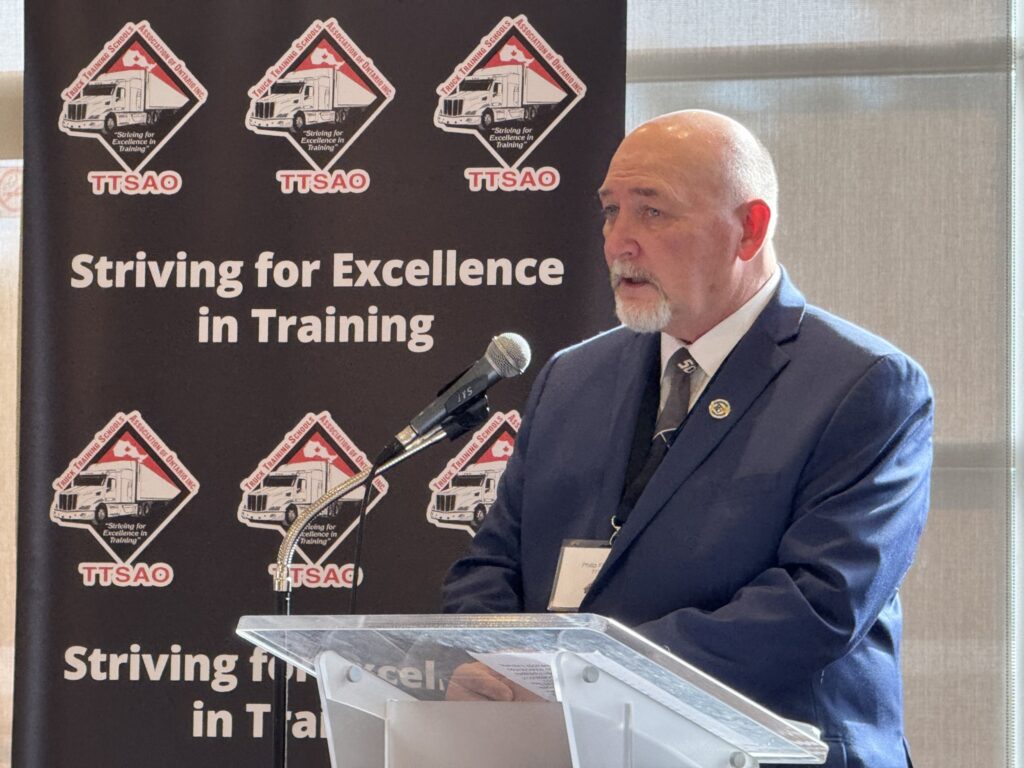The Truck Training Schools Association of Ontario (TTSAO) used its 2025 annual conference to spotlight its Smart Driver Mentor Program, launched in August 2024, emphasizing its role in bridging the gap between completing the entry-level training curriculum and the requirements needed for employment in the industry.
The program, developed in collaboration with DriverVerified and Cutler TCMS, is particularly useful for truck school graduates who lack access to structured finishing programs through carriers, said Philip Fletcher, TTSAO president, during the association’s annual conference in Brampton, Ont.
“Just in the region of Peel, there are 2000 transport companies. I will guarantee you, there’s probably not more than 10% of them that have a very decent onboarding program,” Fletcher said, adding that’s the reason why TTSAO wants to step in and support graduates who may otherwise be left without support.

He explained that the program begins with a mentor selection, as mentors must meet TTSAO’s high standards. They should be with their company for at least three years, maintain a clean safety record, and have no tickets or violations. Ideally, they would also bring coaching or training experience from outside trucking.
“A mentor is someone that really likes to take that position of transfer of knowledge, whether it be in sports, could be in recreational activities, but put that to use in training, and that’s where we get some very good results for mentorship,” Fletcher said. “[This is] somebody compassionate that is geared to watching others get better around them.”
Prospective mentors begin by taking a road test at a TTSAO school, followed by completing the online Professional Driver Improvement Program (PDIP), which takes about three and a half to four hours, he said. Those who score above 85% move on to a second road test, allowing evaluators to measure progress and reinforce training—an approach that helps refresh the driver’s knowledge base and ensures improvement, with all evaluations conducted by TTSAO as a third-party provider.
“When that mentor has gone through the testing phase, now you bring the mentee, or the new driver, in [and] they’ll also do a road test at a TTSAO school,” Fletcher said. “This gives you the starting point. So, when that new driver or mentee has a successful road test and passes, they can then be passed to the mentor who’s already had the two road tests.”
The mentorship process itself includes 59 daily-assessed points of compliance and knowledge covering numerous aspects of driver performance, from pre-trip inspections, paperwork, on-road skills, turns and observation, to following distance, speed, and braking. The program uses pre- and post-assessments to track driver improvement and daily progress reports shared with both carriers and insurance companies.
“The carrier wants to know what’s happening with their drivers. Are they developing is that driver going to be safe? Is he going to be competent in his deliveries? Is he going to be compliant and how he’s looking after the vehicle and the rules of the road? Also, the insurer is going to want to know that. [This] will probably help [bring] insurance fees down the road if you communicate with your insured to that degree.”
The program has already shown results – Fletcher claims that one fleet in Sarnia using the program for onboarding heavy-haul drivers achieved over 80% retention.
He believes this type of a program can help fix the longstanding road safety issue in trucking. “We can get this whole industry back on the right foot. That’s got to work [by] going back to the basics, making sure that things are done the right way, often and without fail.”